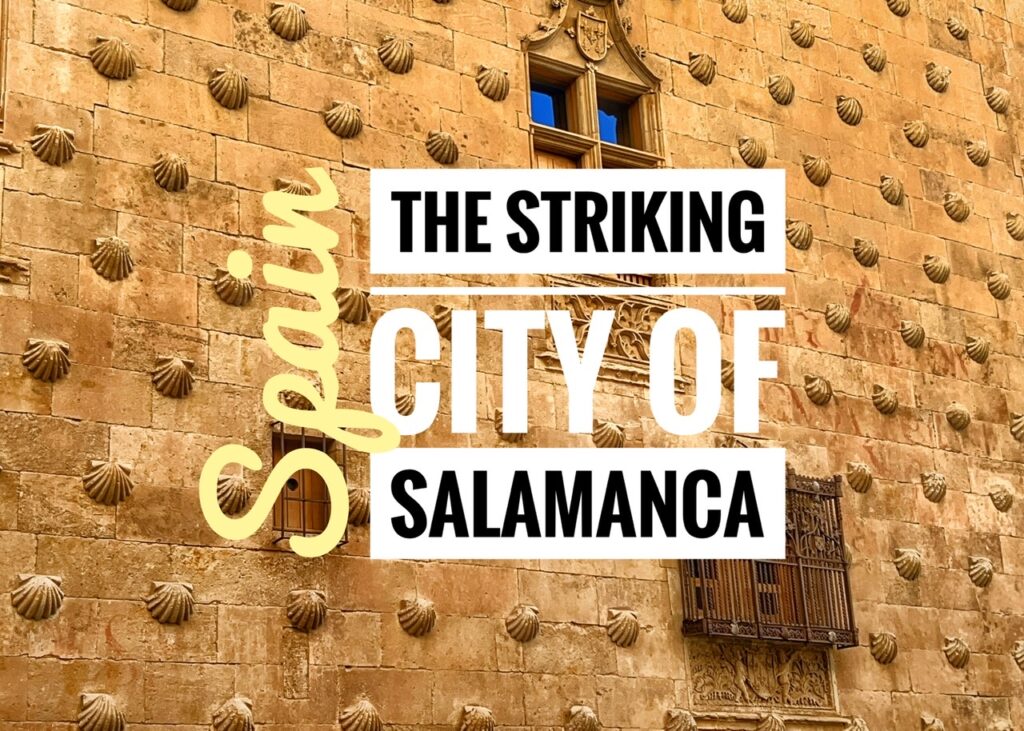
For four centuries, the distinguished and elegant university town of Salamanca (population 150,000) attracted prestigious names such as conquistador Hernán Cortés (Yeah, the guy that wiped out the Aztec Empire) and Christopher Columbus who came here in 1486 on a fruitless attempt to get the university to fund his exploration plans. The town, draped in a seductive sandstone, deteriorated for a period, but today boasts just as much exuberance as during the Golden Age of the 16th Century.
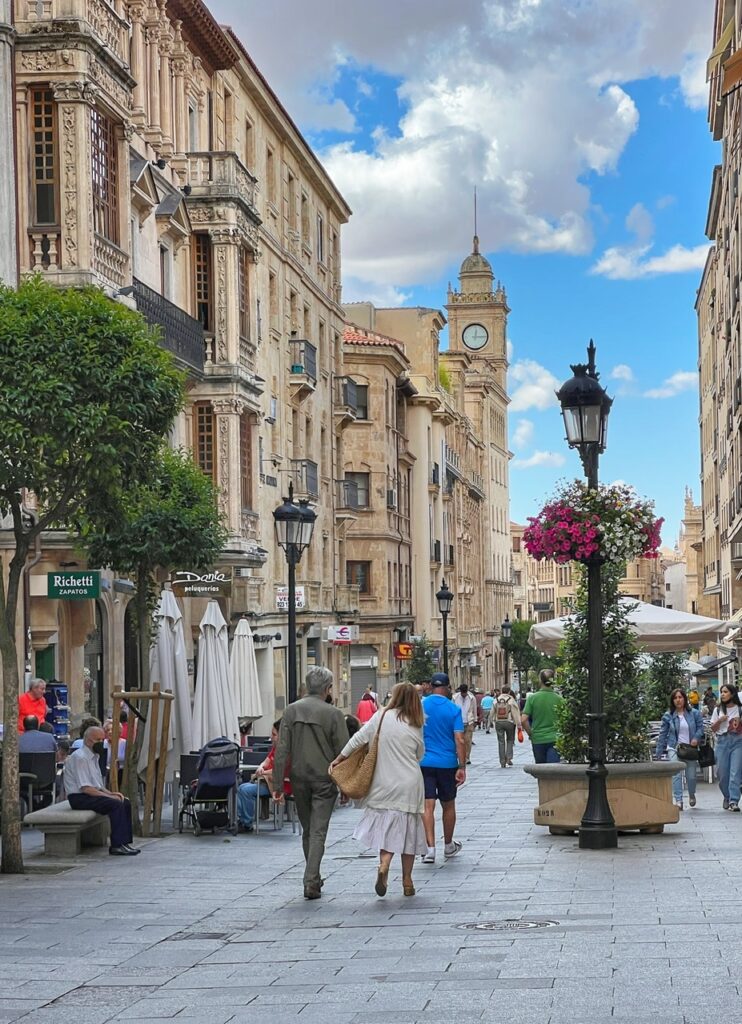
The majority of the historic center is pedestrian only, on which we were walking amongst very few tourists.
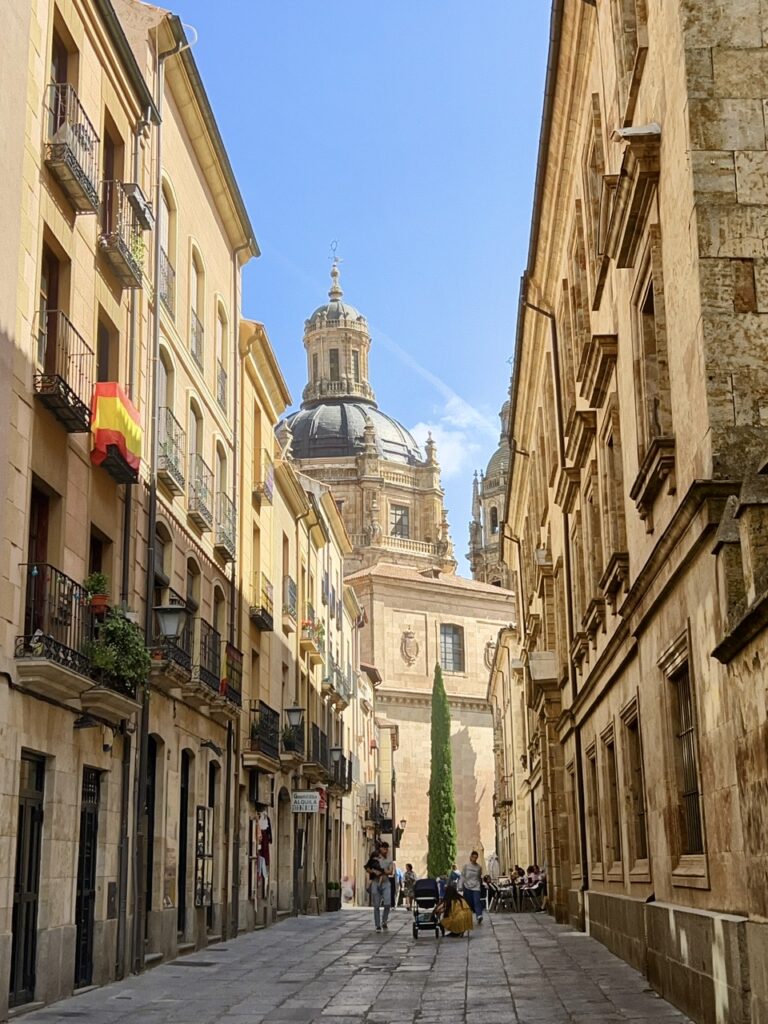
An alley leading to the university. One thing we loved about Salamanca was its Spanish. It’s well known for being a wonderful place to study thanks to its pure accent and dialect. This is good thing since we didn’t hear English anywhere although we guarantee, in this educated enclave, they speak it.

You will find magnificent art and faces on nearly every surface. This on the outside of a bank, or savings box as it translates.

You can tell we’re in Spain because suddenly people seem very dressed up. And we’re feeling a bit American-y. ? No Nikes at least.


The grand and striking Plaza Mayor is encompassed by one remarkable four story building, broken by city hall only on one side. Bullfights were held here well into the 19th Century but fortunately that practice has ended.


Mandy popping a squat (or modeling for a Too Good to Go advertisement) while Greg snaps the photos.

Loved the butter yellow contrast.


Another unofficial plug for Too Good to Go. In a city where food is expensive and mealtimes are erratic, it’s the perfect option for us. 3.99€ ($4.40) for all this including delicious crab salad, a pork tenderloin and veggies and some not-so-delicious pasta with some pungent cheese sauce. At right is where we had our picnic.


Casa de las Muertes is an impressive example of Plateresque architecture and was the home of leading Salamantine architect, Juan de Álava. It was named for the four skulls at the base of the windows. Cheery!

Another example of plateresque lies in el Palacio de Monterrey. Plateresque is a decorative technique of intricate detail named for its resemblance to the art of the silversmith (platero.)


Check out the whimsy which lies on the roof, including French style chimneys.
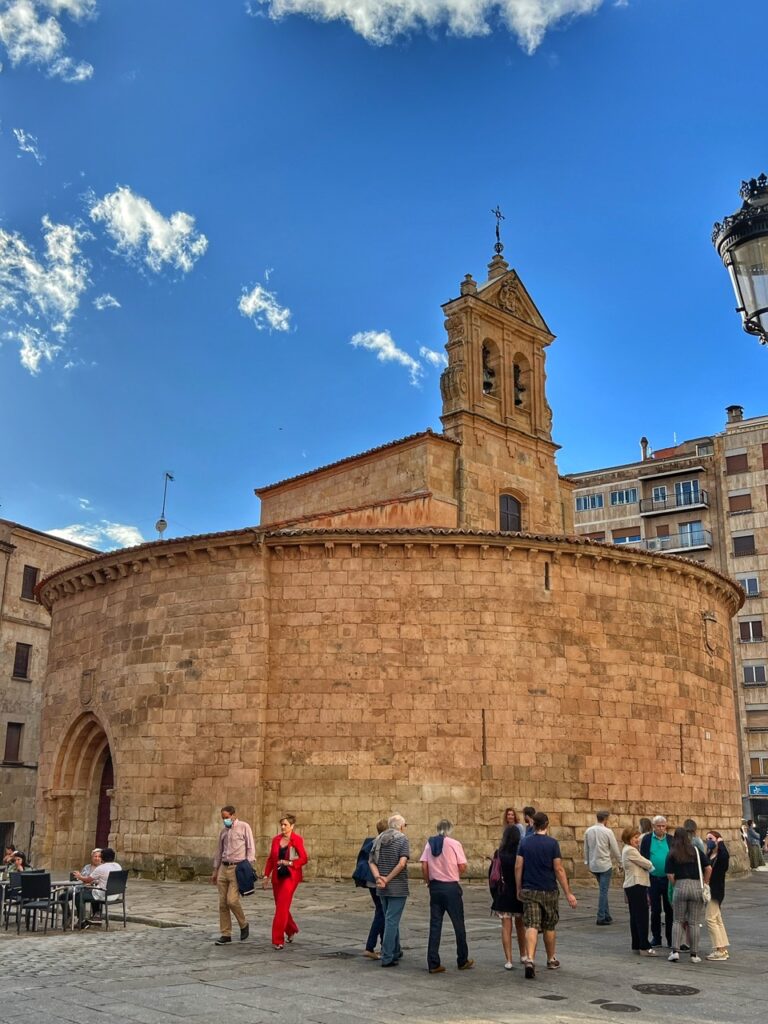
The delightfully round Iglesia de San Marcos was very near our place and dates from 12th Century.

On Sunday morning, we set out “early” (9:00) and were in disbelief to not find a single coffee stand or cafe open.

And the streets looked like this ? Just us and the street sweepers. You’d think it was 6 am!

The streets practically were glowing they were so clean!

And we got the “touristy” Casa de Las Conchas all to ourselves. This 16th century mansion, now the public library, was named for the shells that decorate its facade.

The shells are a symbol of the pilgrimage to Santiago.


An absolutely unusual design.

Roaming the empty streets of the university, founded in 1218. At one point Pope Alexander IV proclaimed it equal to other great universities of the day like Oxford and Paris.

The Old Cathedral on the campus has winding towers that weave their way to the top of the city. Unfortunately, 200 stairs wasn’t on Mandy’s bucket list that day.

Another view of the old cathedral
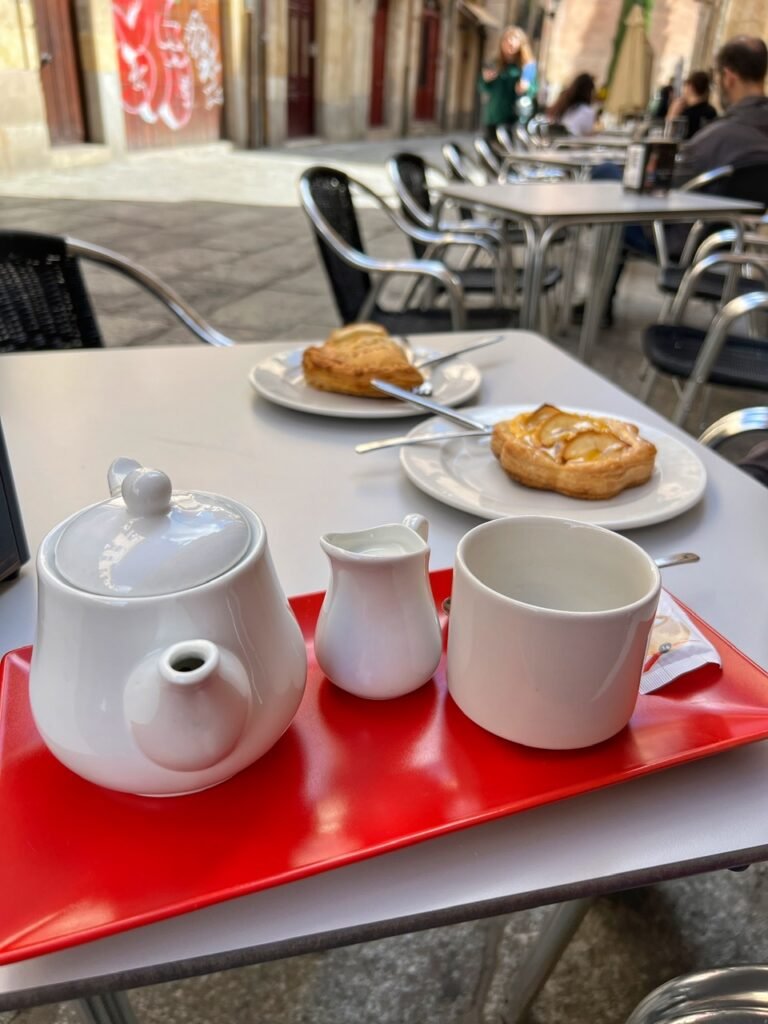
At 10:00, thank god, the cafes finally opened. We tried three. Not one of them had anything except gluten-packed pastries or savory items. Not even eggs. Since Greg is gluten intolerant, this is already becoming a bit of a problem.
So, he ate them anyways chugging down a few of his gluten enzyme pills beforehand.

At 10:43, the streets and cafes were still desolate.

Things picked up around 11 when the tourist groups seem to have finished breakfast. We found them milling around an unlabeled courtyard, gawking upwards in what seems to be mandatory task designed to get people to look at the extraordinary details of this masterpiece. They’re looking for…la Rana de Salamanca….aka…a frog.

Apparently in this facade, if you find the frog (unaided) you will be assured a year of good luck or marriage (or both if you WANT to get married!) within one year. Since we value our necks, we opted to take photos and find the frog later. If you find him in this photo, it would be a miracle.

We only found him later using the help of the Google. Good thing we’re already hitched. ?

Probably someone important.

After hundreds of years, it’s shocking to see how unweathered the details are.

At 11:11…Everyone is out.

Inside the courtyard of the public library, you can see a divine view of La Clerecia Tower.




From the upstairs balcony, which is accessed by a swirling staircase. Also from this balcony, there were lots of nude images of pretty ladies. We’d like to see that fly in our public library ?

The Clerecia de San Marcos colossal baroque church has a different tower you can climb for 3.75€ to enjoy panoramic views of the city.
It’s 11:30 am now and officially the day has begun! Bienvenidos a España!

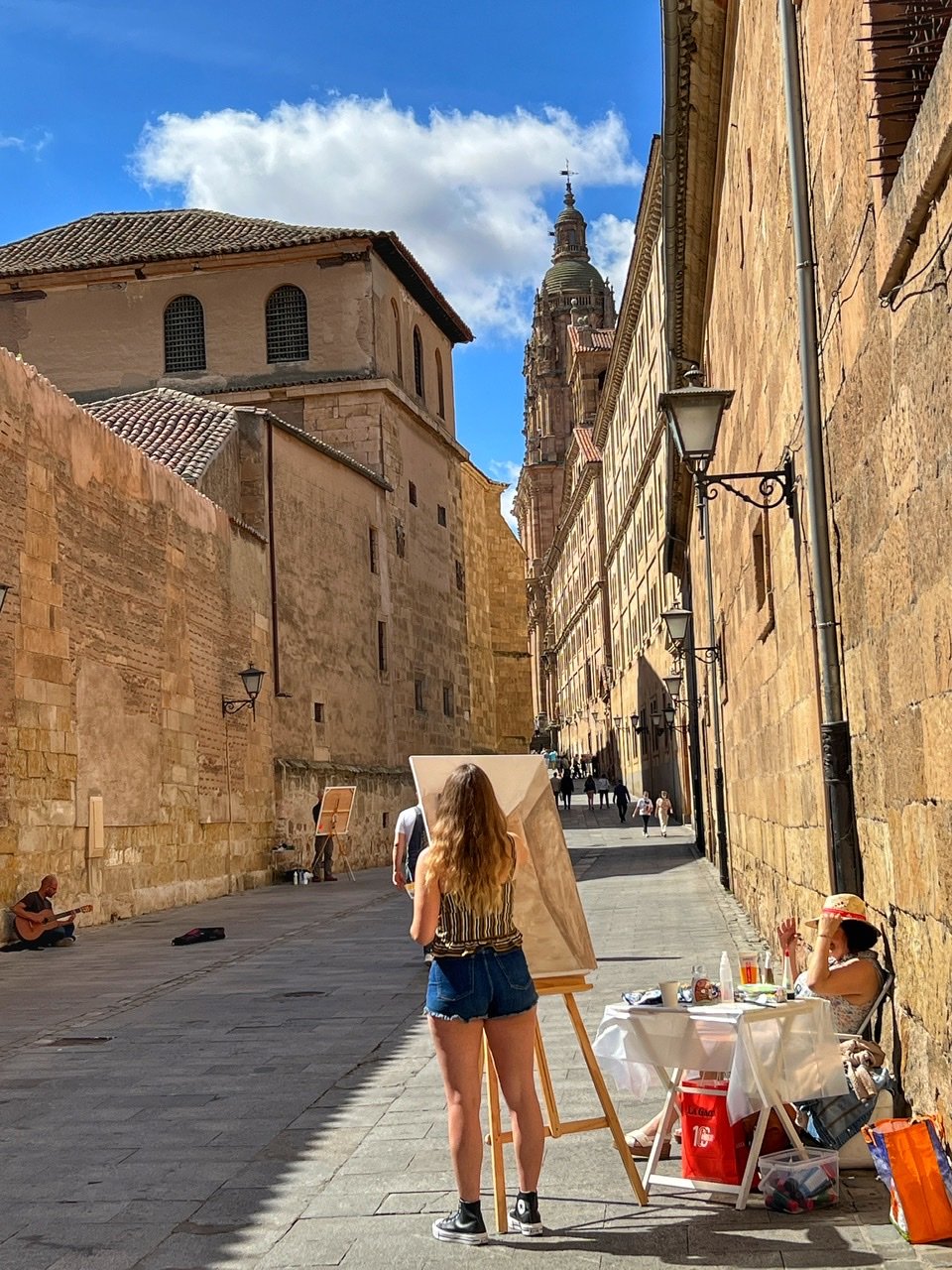
The dignified streets of Salamanca was inundated with student artists on this particular Sunday morning. Not a bad place to set up shop.
Festivities in Salamanca

While feasting on tapas and wine Saturday night, Salamanca astonishingly returned to the Golden Age before our very eyes as a parade of characters from Spain’s 16th and 17th century Spanish court period strutted by.
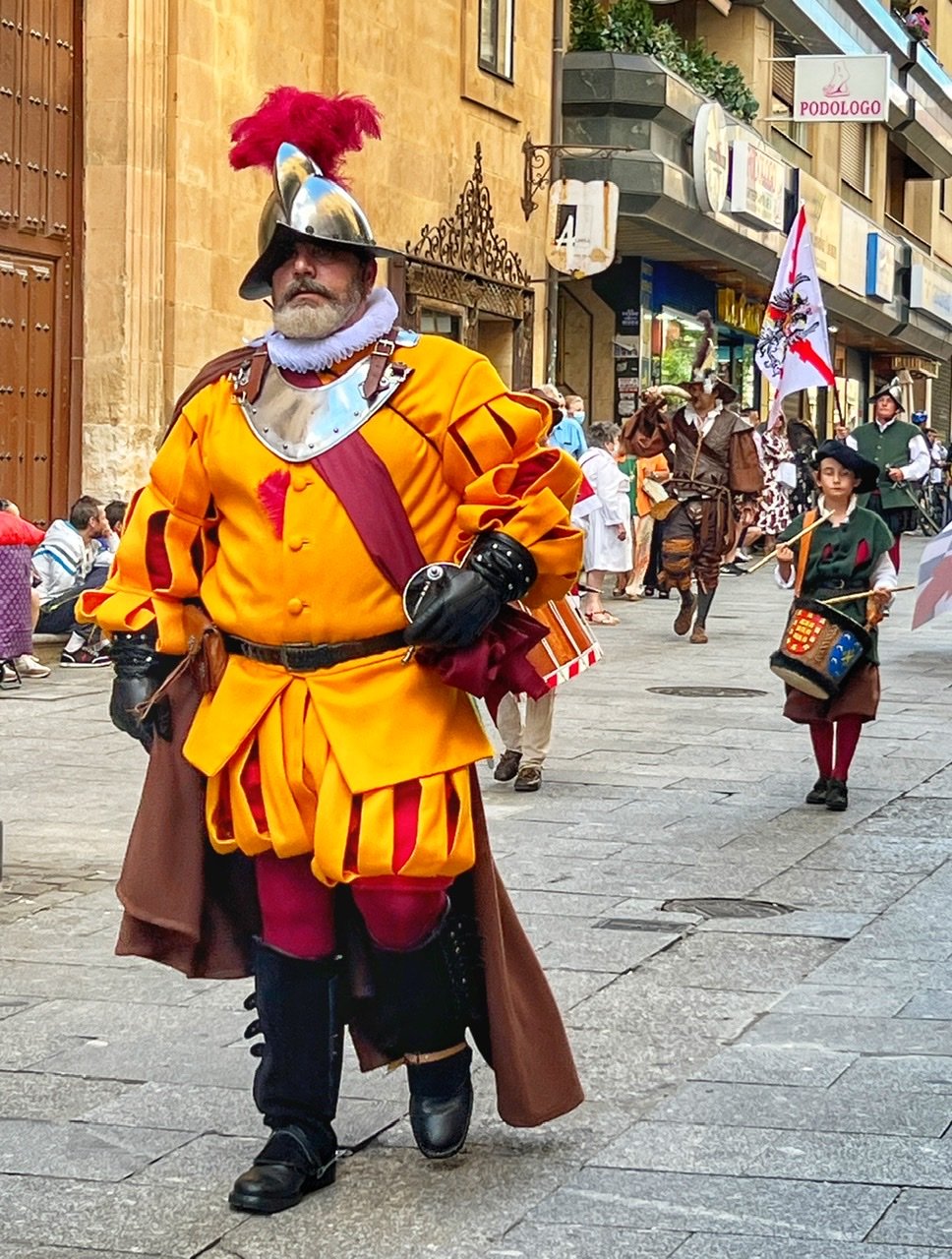





Accompanied by gorgeous weather and sunny skies, hundreds of locals dressed in period costumes, rode horses, played instruments, carried historic flags and weaponry. We love stumbling into festivals!


Final Thoughts


Stating the obvious…For us, Spain is expensive. ?Definitely the most expensive country we’ve been in for years (besides our own!) Because of this, while in Salamanca, we stayed in a well-located hostal which blew our budget and then some at $59/night. For this, we got a private room on the third floor (which was great for Mandy’s new cane practice), as well as a private bath.



The first night in Spain we gorged on…Turkish food. Because it was the only restaurant nearby open at 7 pm and it was cheap. Most restaurants don’t open their doors until 8 or 9 (since those Spaniards like to eat dinner at 10ish and evidently enjoy sleeping with a brick in their stomachs.)
The sun also sets at 10 pm and rises at 7 here. Needless to say…we had some adjusting to do ?



